
views
- Check the crocodile logo for detailed features and high-quality stitching, and make sure that it sits between the second button and bottom stitching on the front of the shirt.
- See if the buttons look unique and feel cool to the touch. Lacoste polos make their buttons with mother of pearl rather than plastic.
- Check that the sizing tag uses numbers (rather than solely S/M/L sizing). If it has a second tag, make sure that it says “Designed In France.”
- Inspect the inner tag of the shirt to ensure that the shirt is made with 100% cotton (rather than a cotton-polyester blend).
Crocodile Logo

A fake Lacoste crocodile patch lacks clear details (like claws). The official logo features a deep, dark green crocodile with noticeable teeth and claws. When it comes to the croc’s mouth, the top jaw is slightly smaller and angled upwards from the lower jaw. The inside of the croc’s mouth is shaded red, and the teeth are clearly stitched along both sides of the jaw. When it comes to facial features, the croc’s eye should look more slit-like than rounded. Some counterfeit polos might have the word “Lacoste” embroidered on the shirt. Ironically, authentic Lacoste polos don’t have this feature.
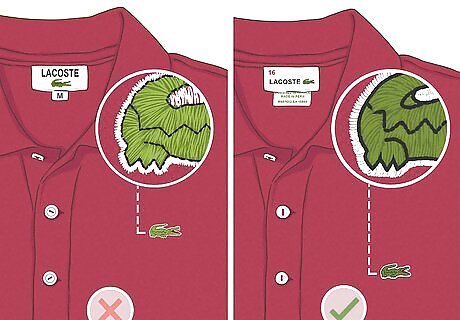
The stitching is incorrect and sloppy. The iconic Lacoste croc gets carefully stitched to each polo shirt—you won’t see any obvious stitching when you give it a close look. To see if it’s a fake, look out for sloppy (and sometimes missing) stitches around the patch’s border. Check along the “wrong” side of the patch, too—fake Lacoste polos often have sloppy stitching on this side.
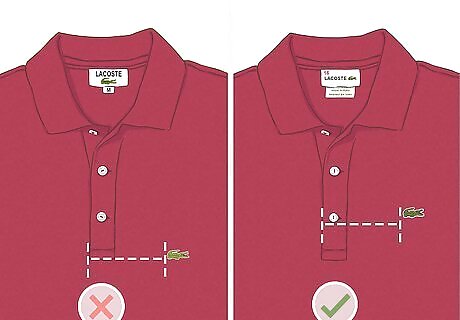
The crocodile logo incorrectly lines up with the bottom shirt slit. On authentic Lacoste polos, the crocodile sits on the middle of the left side of the shirt. It’s stitched between the bottom stitching on the collar and the second button—low-quality fakes often align the crocodile with the bottom stitching. Lie the shirt out flat and look at the crocodile patch from an angle. This might make it easier to tell where the patch lines up.
Button Details

Fake Lacoste buttons are usually sewn horizontally rather than vertically. On genuine Lacoste polos, each button has two holes with thread passing up and down through them (rather than side to side). One button sits at the top of the collar, while the other sits partway down.

The buttons look uniform instead of unique. Lacoste polo buttons are made with mother of pearl. Mother of pearl buttons are all different—when you look close, you’ll see that each button has its own pattern and marbling. Plastic buttons, on the other hand, are mass-produced and look identical.
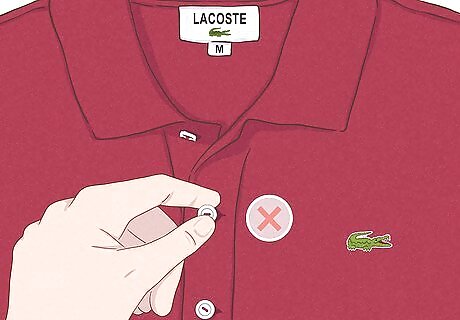
The buttons don’t feel cool to the touch. Lacoste makes their buttons with mother of pearl rather than plastic. Touch the buttons on the shirt and see how they feel—in general, mother of pearl feels cool when you touch it, while plastic does not.
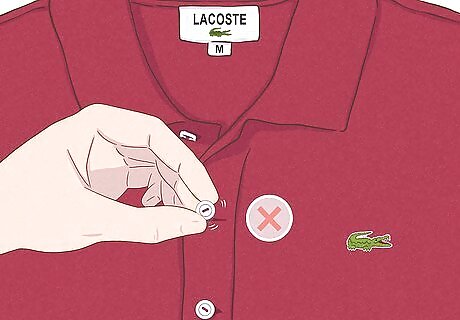
The buttons are loosely stitched to the polo shirt rather than snugly. On genuine Lacoste polos, the buttons are stitched tightly to the shirt and don’t wiggle around. On fake polos, however, the buttons aren’t sewn tightly to the fabric at all and feel really loose.
Shirt Tags

Fake Lacoste polos are only sized with S/M/L rather than with numbers. Lacoste polos are designed in France, which sizes in numbers—so, look for a red number like “4” above the crocodile (or any number between 2 and 9). Nowadays, Lacoste also includes US sizes on some of their tags; however, they’ll always included the European sizing, too. If S/M/L is the only size indicator, the shirt is likely a fake.
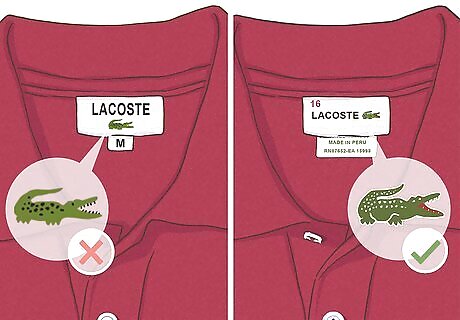
The crocodile on the tag isn’t very detailed. On genuine Lacoste polos, the crocodile is an olive green color and has noticeable claws, teeth, a red mouth, and white scales on its back. Make sure the crocodile’s outline looks smooth instead of lumpy. An authentic one also won’t have rough lines disrupting the coloring. High-quality fakes look similar, but study them closely—they won’t be quite as detailed. The crocodile may look a little squashed, and the white eyes and scales tend to look rough and too close together. Some counterfeiters stitch a boxed outline around the crocodile on the tag.
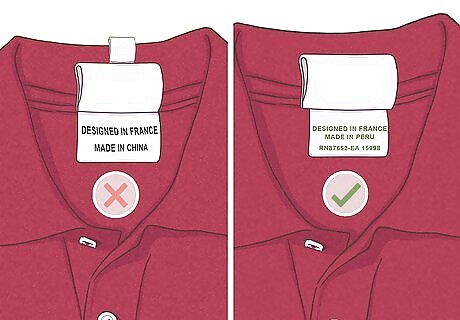
A second tag (if the shirt has one) doesn’t list the shirt’s origin. If the polo has a second tag, it’ll rest under the first one. The first line typically says “Designed In France,” followed by a line that says “Made In” along with a country. If this tag lists any other country than “France” after “Designed In,” it’s definitely a fake! Not all polos have this second tag. Many polos now have a wide tag with the logo, so use other methods to identify them. Authentic Lacoste polos are often made in Peru.
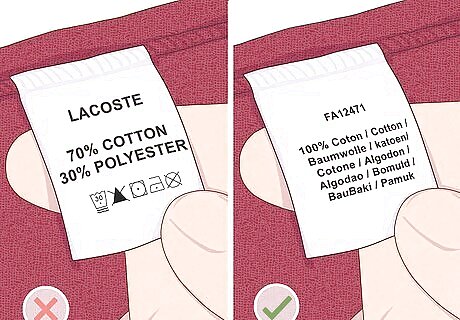
The washing instructions aren’t on the tag inside the shirt. The tag is on the bottom and inside the shirt. When you find it, you will first see “100% cotton” printed in seven languages. On the back, look for washing instructions with the word Devanlay (the company that used to distribute Lacoste products). No fabric should cover the letters on the tag. Fake shirts may have the washing instructions on the tag’s front. The tags may also be roughly sewn in with threads that hang down or obstruct letters. The tag may be above small triangle cuts on the side of the shirt. Make sure these cuts are small and don’t have loose threads hanging from them.
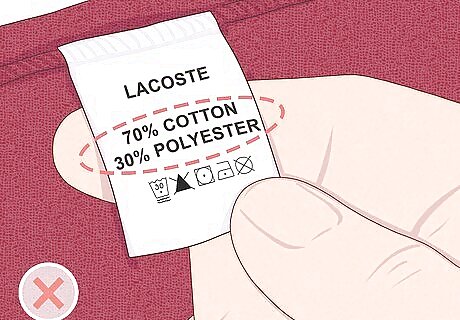
The shirt isn’t made with 100% cotton. Check the inner tag on your polo shirt to see what the shirt is made of. Legitimate Lacoste polos are made entirely with cotton, while fake Lacoste polos might be made with 70% cotton and 30% polyester.


















Comments
0 comment